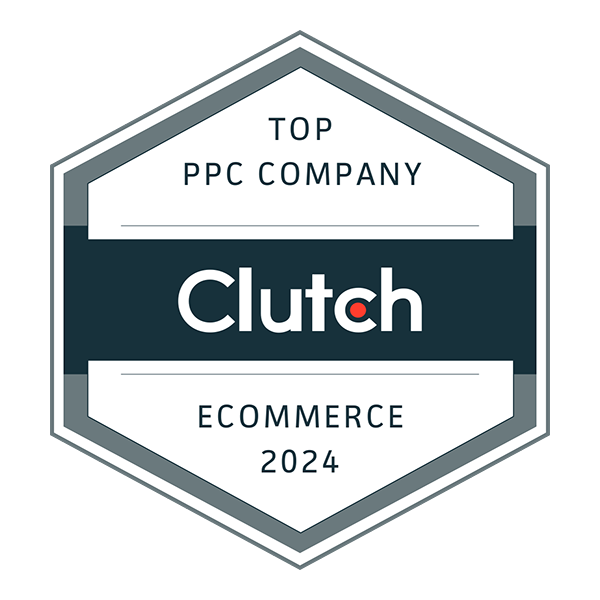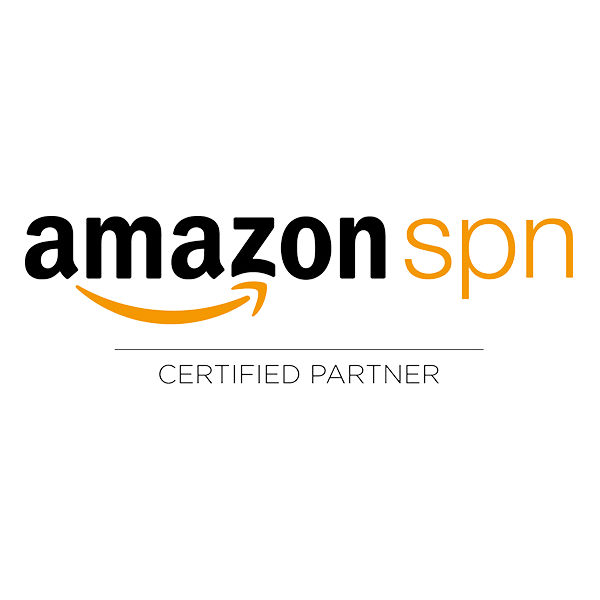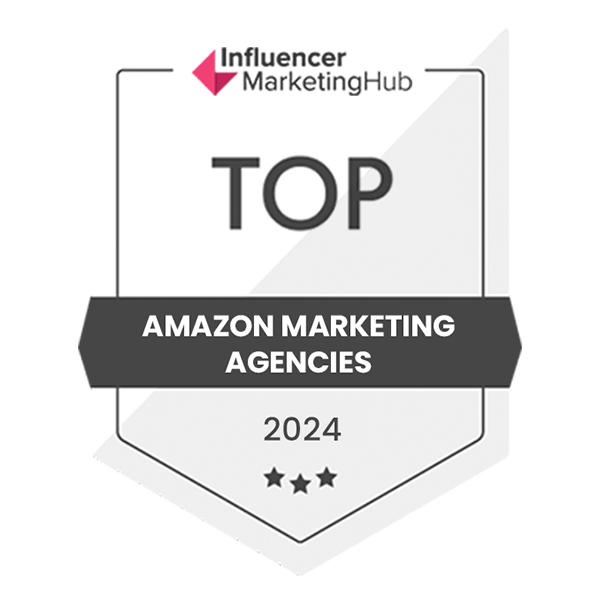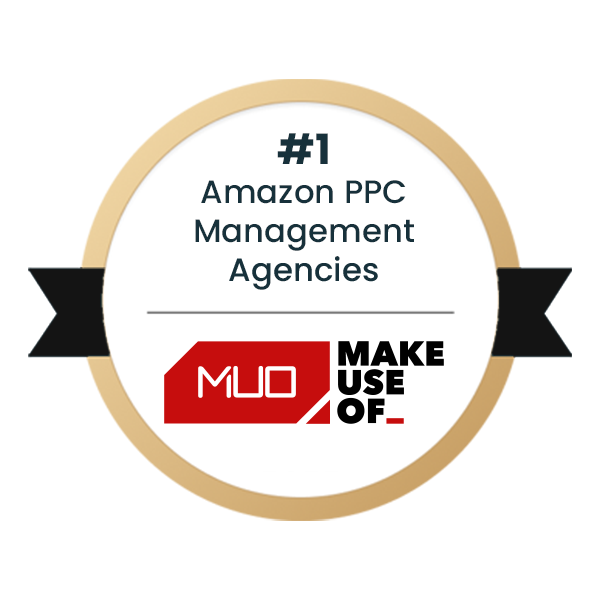Introduction: The Great Debate Finally Settled
The manual versus automatic campaign debate has raged since Amazon introduced PPC advertising. Sellers in Facebook groups argue passionately for their preferred method, agencies push their “proprietary” approaches, and newcomers remain paralyzed by conflicting advice. The truth? Both camps are right—and wrong—because they’re asking the wrong question.
The question isn’t “Which is better, manual or automatic?” but rather “When and how should I use each type to maximize profitability?” Successful sellers don’t choose sides; they leverage both campaign types strategically, understanding that each serves unique purposes in a comprehensive PPC strategy.
This guide definitively answers when, why, and how to use manual versus automatic campaigns. We’ll explore the hidden strengths of each type, reveal advanced strategies that combine both, and provide specific frameworks for different business scenarios. By the end, you’ll understand exactly how to deploy each campaign type for maximum impact, regardless of your experience level or business size.
Understanding the Fundamental Differences
Automatic Campaigns: The Discovery Engine
Automatic campaigns are Amazon’s AI-powered keyword discovery system. When you create an automatic campaign, you’re essentially telling Amazon: “Here’s my product and budget—you figure out where to show my ads.” Amazon’s algorithm then matches your product to customer searches based on multiple factors:
The Algorithm’s Data Points: Amazon analyzes your listing title, bullets, description, backend keywords, category placement, historical performance, competitor landscape, and even customer behavior patterns. This comprehensive analysis allows automatic campaigns to discover keywords you’d never imagine. Who would guess that buyers searching for “meditation gifts for women” would purchase yoga mats at high conversion rates?
The Four Targeting Groups: Within automatic campaigns, Amazon offers four distinct targeting groups, each serving different purposes:
- Close Match targets searches closely related to your product. For a yoga mat, this includes “exercise mat,” “workout mat,” or “fitness mat.” These typically provide the highest relevance and conversion rates.
- Loose Match casts a wider net, showing your ads for broadly related searches. Your yoga mat might appear for “home gym equipment” or “pilates accessories.” While conversion rates drop, you discover unexpected keyword opportunities.
- Substitutes shows your product when customers view similar competing products. This is essentially automated competitor targeting, appearing on competitor product pages and in “Customers who viewed this item also viewed” sections.
- Complements displays your product alongside items frequently bought together. Your yoga mat might appear with yoga blocks, straps, or workout clothes. This targeting often reveals cross-selling opportunities.
Manual Campaigns: The Precision Instrument
Manual campaigns put you in the driver’s seat, offering complete control over where your ads appear. You choose exact keywords, set individual bids, and determine match types. This precision enables optimization impossible with automatic campaigns.
The Three Match Types:
- Exact Match provides surgical precision, showing ads only for the exact keyword or close variants. “[yoga mat]” triggers ads for “yoga mat,” “yoga mats,” or “mat yoga,” but not “best yoga mat” or “yoga mat for beginners.” This precision typically yields the highest conversion rates but limits reach.
- Phrase Match offers controlled flexibility. “yoga mat” as phrase match triggers “yoga mat for beginners,” “best yoga mat 2025,” or “thick yoga mat,” but not “mat for yoga” or “yoga and pilates mat.” You maintain keyword order while allowing additional terms.
- Broad Match maximizes reach but sacrifices control. “yoga mat” might trigger “exercise equipment for yoga,” “mat for hot yoga practice,” or even “pilates mat.” While discovery potential is high, irrelevant clicks can quickly drain budgets without careful negative keyword management.
The Strategic Framework: When to Use Each Type
When Automatic Campaigns Excel
Scenario 1: New Product Launches
Automatic campaigns shine during product launches when you lack historical data. Instead of guessing which keywords might work, let Amazon’s algorithm explore the entire keyword universe. This unbiased discovery often reveals unexpected high-performers.
Implementation Strategy:
- Start with 2-3x your normal budget for maximum data collection
- Run all four targeting groups initially
- Collect data for 14-21 days before optimization
- Harvest converting search terms weekly for manual campaigns
Scenario 2: Keyword Discovery and Expansion
Even established products benefit from continuous automatic campaigns. Markets evolve, search trends change, and new competitors enter. Automatic campaigns adapt to these changes automatically, discovering emerging keywords before competitors.
The 80/20 Discovery Rule: Allocate 20% of your PPC budget to automatic discovery campaigns. This ensures continuous keyword pipeline while maintaining profitability through manual campaigns.
Scenario 3: International Market Entry
Expanding to UK, Germany, or Japan? Automatic campaigns overcome language and cultural barriers. They understand local search patterns, colloquialisms, and buying behaviors that direct translation might miss.
Scenario 4: Seasonal and Trend Identification
Automatic campaigns excel at identifying seasonal patterns and emerging trends. They might discover that your yoga mats suddenly appear for “home school PE equipment” during back-to-school season—an opportunity you’d never identify manually.
When Manual Campaigns Dominate
Scenario 1: Proven Keyword Optimization
Once automatic campaigns identify converting keywords, manual campaigns optimize them for maximum profitability. You can set precise bids, adjust by time of day, and create keyword-specific ad copy.
Scenario 2: Brand Defense and Protection
Protecting your brand terms requires manual campaign precision. You need exact match campaigns for your brand name with aggressive bids to prevent competitor conquest. Automatic campaigns can’t provide this defensive precision.
Scenario 3: Competitive Targeting
While automatic campaigns include competitor targeting, manual ASIN targeting provides superior control. You can select specific competitor products, adjust bids based on their weaknesses, and track performance precisely.
Scenario 4: Budget-Conscious Scaling
When every dollar counts, manual campaigns prevent waste. You invest only in proven keywords, eliminating the discovery cost inherent in automatic campaigns.
The Hybrid Approach: Maximizing Both Campaign Types
The Keyword Graduation System
The most successful sellers use automatic campaigns as a keyword incubator, systematically graduating high-performers to manual campaigns:
Stage 1: Discovery Phase (Automatic Campaign)
- New keywords enter through automatic campaigns
- Run for 7-14 days accumulating clicks
- Monitor daily but don’t optimize aggressively
Stage 2: Validation Phase (Still Automatic)
- Keywords with 2+ conversions get attention
- Add poor performers as negative keywords
- Continue monitoring for consistency
Stage 3: Graduation (Move to Manual)
- Keywords with 3+ conversions at acceptable ACoS graduate
- Create exact match manual campaign for keyword
- Add as negative exact match to automatic campaign
Stage 4: Expansion (Manual Variations)
- Test phrase and modified broad match versions
- Create variations and long-tail versions
- Build keyword families around winners
The Portfolio Strategy: Automatic and Manual Working Together
Structure portfolios where automatic and manual campaigns complement rather than compete:
Discovery Portfolio (30% of budget):
- Automatic campaigns for all products
- Higher ACoS tolerance (40-50%)
- Weekly search term harvesting
- Negative keyword lists preventing overlap
Performance Portfolio (50% of budget):
- Manual exact match campaigns
- Proven keywords only
- Target ACoS (15-25%)
- Daily bid optimization
Scale Portfolio (20% of budget):
- Manual phrase and broad campaigns
- Expanding on proven keyword themes
- Moderate ACoS targets (25-35%)
- Balance between discovery and profitability
Advanced Strategies: Beyond Basic Implementation
The Automatic Campaign Segmentation Strategy
Instead of one automatic campaign per product, create four separate campaigns for each targeting group:
Campaign 1: Close Match Only
- Higher bids ($1.00-1.50)
- Larger budget
- Expect highest conversion rates
- Minimal negative keywords
Campaign 2: Loose Match Only
- Moderate bids ($0.50-0.75)
- Moderate budget
- Aggressive negative keywords
- Discovery focus
Campaign 3: Substitutes Only
- Competitive bids based on your positioning
- Target competitors with higher prices or worse reviews
- Track competitor ASIN performance
Campaign 4: Complements Only
- Low bids ($0.30-0.50)
- Small budget
- Identify cross-selling opportunities
- Build bundle ideas
This segmentation provides granular control while maintaining automatic campaign benefits.
The Manual Campaign Keyword Clustering
Group related keywords in manual campaigns for better optimization:
Cluster Type 1: Intent-Based
- “Buy yoga mat” cluster (high commercial intent)
- “Best yoga mat” cluster (research intent)
- “Yoga mat reviews” cluster (comparison intent)
Cluster Type 2: Feature-Based
- “Thick yoga mat” cluster (comfort seekers)
- “Non-slip yoga mat” cluster (safety conscious)
- “Eco-friendly yoga mat” cluster (environmentally aware)
Cluster Type 3: Audience-Based
- “Yoga mat for beginners” cluster
- “Professional yoga mat” cluster
- “Kids yoga mat” cluster
Each cluster can have different bids, budgets, and even different products promoted.
The Negative Keyword Arbitrage
Use negative keywords strategically between automatic and manual campaigns:
- Identify high-performing keywords in automatic campaigns
- Create exact match manual campaigns for these keywords
- Add as negative EXACT match to automatic (not phrase or broad)
- Automatic campaign continues discovering variations
- Manual campaign captures exact match at optimal bid
This prevents direct competition while maintaining discovery potential.
Campaign Type Performance Metrics: What to Expect
Automatic Campaign Benchmarks
Understanding typical performance helps set realistic expectations:
Click-Through Rate (CTR):
- Close Match: 0.40-0.60%
- Loose Match: 0.20-0.35%
- Substitutes: 0.30-0.45%
- Complements: 0.15-0.25%
Conversion Rate:
- Close Match: 10-15%
- Loose Match: 5-8%
- Substitutes: 7-10%
- Complements: 3-5%
ACoS Expectations:
- Launch Phase: 40-60%
- Optimization Phase: 30-40%
- Mature Phase: 25-35%
Manual Campaign Benchmarks
Manual campaigns should outperform automatic once optimized:
By Match Type:
- Exact Match CTR: 0.50-0.80%
- Phrase Match CTR: 0.35-0.55%
- Broad Match CTR: 0.25-0.40%
Conversion Rates:
- Exact Match: 12-20%
- Phrase Match: 8-12%
- Broad Match: 5-8%
ACoS Targets:
- Exact Match: 15-25%
- Phrase Match: 20-30%
- Broad Match: 25-40%
Troubleshooting Common Scenarios
Scenario 1: “My Automatic Campaigns Outperform Manual”
This counterintuitive situation occurs more often than sellers admit. Reasons and solutions:
Cause 1: Insufficient Keyword Research
Your manual campaigns might target the wrong keywords.
Solution: Let automatic campaigns run longer, harvest more keywords, and expand manual campaigns gradually.
Cause 2: Over-Optimization
Aggressive negative keywords in manual campaigns might eliminate profitable variations.
Solution: Use exact match negatives sparingly, allow some flexibility.
Cause 3: Amazon’s Algorithm Advantage
Amazon’s AI might understand your product better than you do.
Solution: Maintain both campaign types, allocate more budget to automatic if consistently better.
Scenario 2: “Automatic Campaigns Waste Money”
High ACoS in automatic campaigns frustrates many sellers:
Solution 1: Targeting Group Optimization
Disable underperforming targeting groups. If Complements shows 80% ACoS, turn it off while maintaining Close Match at 25% ACoS.
Solution 2: Negative Keyword Implementation
Add irrelevant search terms as negative keywords weekly. Build a master negative list for all automatic campaigns.
Solution 3: Bid Adjustment
Lower bids incrementally (10% weekly) until you find the profitability sweet spot. Automatic campaigns don’t need top placement for discovery.
Scenario 3: “Manual Campaigns Won’t Spend”
Created manual campaigns but they won’t spend budget:
Solution 1: Bid Competitiveness
Your bids might be below market rate. Check suggested bid ranges and bid at the higher end initially.
Solution 2: Keyword Selection
Ultra-specific keywords might have no search volume. Use phrase match initially, then narrow to exact match after proving volume.
Solution 3: Listing Quality
Amazon won’t show ads for poor-quality listings. Improve your listing quality score through better images, titles, and descriptions.
Platform-Specific Considerations
Mobile vs Desktop Differences
Automatic and manual campaigns perform differently across devices:
Mobile Behavior:
- Automatic campaigns perform better on mobile
- Shorter attention spans favor automatic placement
- Close Match targeting excels on mobile devices
Desktop Behavior:
- Manual campaigns outperform on desktop
- Longer research sessions favor precise targeting
- Exact match keywords convert better on desktop
Strategy: Adjust bids by placement, increasing automatic campaign bids for mobile and manual campaign bids for desktop.
International Marketplace Variations
Campaign type performance varies by marketplace:
- United States: Manual campaigns typically outperform due to market maturity and competition.
- United Kingdom: Similar to US but automatic campaigns stronger for British spelling variations.
- Germany: Automatic campaigns excel due to compound word complexity in German.
- Japan: Automatic campaigns essential for character set variations and cultural nuances.
The Evolution Strategy: Adapting Over Time
Product Lifecycle Campaign Management
Launch Phase (Months 1-3):
- 70% automatic, 30% manual
- Focus on discovery and ranking
- Accept higher ACoS for data
Growth Phase (Months 4-9):
- 50% automatic, 50% manual
- Balance discovery with optimization
- Target profitable ACoS
Maturity Phase (Months 10+):
- 30% automatic, 70% manual
- Maximize profitability
- Maintain market position
Seasonal Adjustments
Peak Season (Q4, Prime Day):
- Increase manual campaign budgets
- Reduce automatic campaign exploration
- Focus on proven converters
Off-Season:
- Increase automatic campaign discovery
- Test new keywords and audiences
- Build data for next peak season
Building Your Campaign Type Strategy
The Decision Framework
Use this flowchart for campaign type decisions:
- New Product? → Start with automatic
- Have 50+ converting keywords? → Emphasize manual
- Entering new market? → Lead with automatic
- Defending position? → Focus on manual
- Limited budget? → Prioritize manual
- Need growth? → Balance both equally
The Implementation Checklist
Week 1-2: Foundation
- Launch automatic campaign for each product
- Enable all targeting groups initially
- Set conservative budgets ($20-30 daily)
- Document baseline metrics
Week 3-4: Analysis
- Download search term reports
- Identify converting keywords
- Add negative keywords to automatic
- Prepare manual campaign keyword lists
Week 5-6: Expansion
- Launch manual exact match campaigns
- Graduate top automatic keywords
- Set up negative keyword preventing overlap
- Adjust budgets based on performance
Week 7-8: Optimization
- Compare campaign type performance
- Adjust budget allocation
- Expand winning campaign types
- Document learnings
Tools and Resources for Campaign Management
For Automatic Campaigns
Amazon’s Native Tools:
- Search Term Reports (essential for harvesting)
- Placement Reports (understand where ads show)
- Targeting Reports (compare targeting group performance)
Third-Party Solutions:
- Cerebro by Helium 10: Reverse-engineer automatic campaign discoveries
- Perpetua: Automated keyword harvesting and graduation
- Scale Insights: AI-powered automatic campaign optimization
For Manual Campaigns
Keyword Research:
- Keyword Scout (Jungle Scout): Find manual campaign keywords
- Magnet (Helium 10): Discover keyword variations
- Sonar (Free): Basic keyword discovery
Bid Management:
- PPC Entourage: Manual campaign bid optimization
- Sellics: Comprehensive manual campaign management
- Ad Badger: Simplified bid adjustments
Case Studies: Real-World Applications
Case Study 1: The Discovery Success
Product: Bamboo Cutting Board
Challenge: Established market, unclear differentiation
Strategy:
- Launched aggressive automatic campaign
- Discovered unexpected keyword: “charcuterie board”
- Graduated to manual campaign
- Pivoted entire product positioning
Results:
- 300% sales increase in 60 days
- Dominated “bamboo charcuterie board” niche
- 18% ACoS on previously unknown keyword
Case Study 2: The Manual Campaign Mastery
Product: Premium Yoga Mat ($89)
Challenge: High price point, competitive market
Strategy:
- Minimal automatic campaigns (10% budget)
- Focused on manual exact match for quality keywords
- Targeted “professional,” “studio quality,” “instructor” terms
- Avoided price-sensitive broad keywords
Results:
- 22% ACoS despite premium pricing
- 15% conversion rate on manual campaigns
- Ranked #1 for “professional yoga mat”
Case Study 3: The Hybrid Harmony
Product: Resistance Bands Set
Challenge: Seasonal demand, multiple use cases
Strategy:
- 50/50 split between automatic and manual
- Automatic discovered seasonal trends
- Manual optimized core keywords
- Adjusted ratio seasonally
Results:
- Captured “home gym” surge during lockdowns
- Maintained profitability year-round
- 24% average ACoS across all campaigns
Future Trends: The Evolution of Campaign Types
Amazon’s AI Advancement
Automatic campaigns are becoming increasingly sophisticated:
- Predictive Targeting: Amazon’s algorithm will predict customer intent before they search
- Cross-Category Discovery: Automatic campaigns will identify opportunities in unexpected categories
- Behavioral Targeting: Campaigns will target based on browsing patterns, not just keywords
The Convergence Theory
Manual and automatic campaigns are slowly converging:
- Smart Manual Campaigns: Manual campaigns with AI-assisted bid optimization
- Controlled Automatic: Automatic campaigns with manual override capabilities
- Hybrid Campaign Types: New campaign types combining both approaches
Preparing for Change
Stay ahead of evolution:
- Master both campaign types now
- Build flexible structures that can adapt
- Focus on principles over tactics
- Maintain testing mindset
Your Action Plan: Implementing the Right Mix
For Beginners (< $10K monthly revenue)
Month 1:
- 80% automatic, 20% manual
- Focus on learning and discovery
- Accept 40-50% ACoS
Month 2-3:
- 60% automatic, 40% manual
- Graduate winning keywords
- Target 35% ACoS
Month 4+:
- 40% automatic, 60% manual
- Optimize for profitability
- Achieve 25-30% ACoS
For Intermediate Sellers ($10-50K monthly)
Current State Audit:
- Analyze last 60 days performance by campaign type
- Identify which type drives more profit
- Calculate true ACoS including organic lift
Optimization Sprint:
- Week 1: Audit and clean automatic campaigns
- Week 2: Expand manual campaigns with proven keywords
- Week 3: Implement negative keyword strategy
- Week 4: Adjust budget allocation based on results
For Advanced Sellers ($50K+ monthly)
Portfolio Approach:
- Create separate portfolios for each campaign type
- Implement algorithmic bid management
- Test new Amazon beta features
- Consider programmatic advertising
Conclusion: The Balanced Path to PPC Success
The manual versus automatic debate misses the point entirely. Success doesn’t come from choosing one over the other but from understanding when and how to leverage each type’s unique strengths.
Automatic campaigns are your scouts, exploring unknown territory and adapting to market changes. Manual campaigns are your specialists, maximizing profit from proven opportunities.
The sellers who dominate their categories don’t pick sides—they orchestrate both campaign types in harmony. They use automatic campaigns to stay ahead of trends while manual campaigns deliver predictable profit. They understand that market conditions, product lifecycle, and business goals determine the optimal mix, not dogmatic adherence to one approach.
Your optimal campaign mix is unique to your situation. A new seller needs automatic campaigns’ discovery power. An established brand requires manual campaigns’ precision. Most fall somewhere between, requiring both types in varying proportions.
Start where you are. If you’ve only run automatic campaigns, begin graduating keywords to manual. If you’ve only run manual, launch automatic campaigns for discovery. Test, measure, and adjust based on data, not opinion.
The path to PPC mastery isn’t choosing between manual and automatic—it’s transcending the debate entirely. Your competitors are stuck arguing which is better. While they’re debating, you’ll be dominating.







